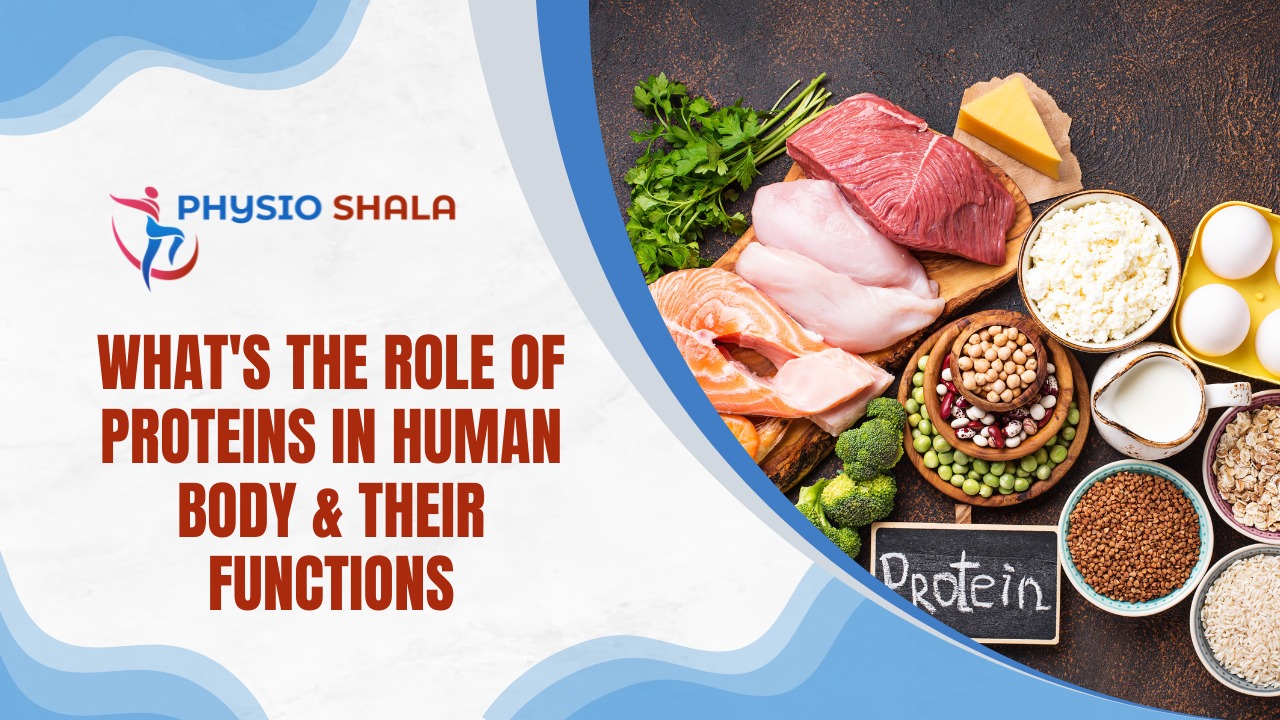The word protein is derived from the Greek word proteios which means holding the first place. Proteins are biomolecules that contain carbon, hydrogen, oxygen, and nitrogen and they are the most abundant organic molecules of the living system. They are in every part of the cell and constitute fifty percent of the cellular dry weight. Also, they are the fundamental basis of the structure and function of life.
There are many proteinous compounds like enzymes and hormones which are also nitrogen-containing compounds. Nitrogen is an essential component of proteins. A protein is a final product obtained from its building blocks—the amino acids (link Amino acids article here). The amino acids build up to form Peptidesà Polypeptidesà Peptonesà PolypeptonesàProteaseà Proteins.
Conversely, proteins break down (hydrolysis) finally to yield amino acids. Thus, they are the polymers of amino acids.
Elemental Composition
Proteins are predominantly constituted by five major elements in the following proportion.
- Carbon- 50-55%
- Hydrogen- 6-7.3%
- Oxygen- 19-24%
- Nitrogen- 13-19%
- Sulphur- 0-14%
Functions
- Proteins are an essential constituent of the cell and cell structure. They are a part of cell membranes.
- Proteins maintain oncotic pressure called the osmotic pressure of the colloidal blood. Albumin is mainly responsible for 75-80% of the colloidal osmotic pressure of the blood.
- They provide energy through exogenous metabolism and are essential for growth through endogenous metabolism. They are an important part of the body and are found in muscles, bone matrix, connective tissues, skin, nails, and hair.
- In the transport systems in the body, some proteins act as a carrier for the transfer of substrates and products. These carry plasma insoluble constituents like lipids and some hormones in the circulatory system of the body.
- The bio-catalysts, enzymes, blood clotting factors, and some hormones are protein in nature.
- It serves as a buffer to maintain the pH of the blood. Proteins are amphoteric in nature and function as effective buffers in a natural way to prevent acidosis and alkalosis of the blood.
- Immunity is provided by the proteins like immunoglobulins which are called antibodies (also called the gamma-globulins).
- They help in the transfer of lipids in blood circulation in the form of lipoproteins.
Classification of Proteins
It is classified into three groups based on solubility, shape, and composition.
Proteins based on Solubility
- Some are water-soluble like- Albumins
- Some are soluble in the salt solution like- Globulins
- Some are soluble in acids like- Histidine
Proteins based on Shape
- Some proteins are globular in shape where they have many polypeptide chains tightly bound and folded into a compact globular shape. These are soluble in water and serve in dynamic functions of the cell.
- The fibrous proteins have polypeptides that are arranged in a parallel fashion along a single axis to yield fibers or sheets. They are tough and insoluble in water. They form the structure in connective tissues of higher animals such as collagen of tendons and bones in humans. Example- α-keratin is present in human hair and nails.
Proteins based on Composition
- SIMPLE: these are formed by the linkage of amino acids by peptide bonds.
- CONJUGATED: these are composed of a protein part (from amino acids) and a non-protein part called the prosthetic group.
Protein + Prosthetic groupà Holoproteins (conjugated protein)
Examples– lipoprotein, nucleoprotein, glycoprotein, chromoprotein, phosphoprotein, hemoglobin. - DERIVED: these proteins are obtained by the hydrolysis of high molecular weight protein. Chemically and technically peptones, polypeptides, and peptides are called derived proteins.
Structure of Proteins
Proteins are the polymers of L-α-amino acids. The structure of proteins is rather complex which can be divided into 4 types based on the levels of the organization
- Primary structure: It is the linear sequence of amino acids which forms the backbone of proteins (polypeptides). The primary structure is composed of several peptide bonds from different amino acids in a linear sequence. This structure is very stable and does not undergo denaturation. The sequence of different amino acids determines the properties of the protein and even if a single amino acid is changed it results in a new structure with the entire properties altered.
For example- in hemoglobin the sequence of amino acids is this:
Val—His—Leu—Thr—Pro – Gly—Glu—Lys
Now if glycine (Gly) at the sixth position is replaced by valine (Val) it results in sickle-cell anemia. - Secondary structure: The spatial arrangement of protein by twisting of the polypeptide chain.
The secondary structure of proteins arises from the coiling of the primary structure to form α-helix where the rotation is in the clockwise direction. In this helical form, the structure is held by mainly H-bonds and sometimes by sulfur bonds. The secondary structure also has flat or pleated structures called β-pleated structures. They can be parallel or anti-parallel. - Tertiary structure: The three-dimensional structure of a functional protein.
A tertiary structure is a conglomerate of different types of secondary structures resulting in a three-dimensional form and they involve different α-helices. These structures involve- H-bonds; di-sulfide bonds; ionic bonds; hydrophobic interaction; and Vander-Waal forces- all these interactions help stabilize the tertiary structure. - Quaternary structure: Some of the proteins are composed of two or more polypeptide chains referred to as subunits. The spatial arrangement of these subunits is known as quaternary structure.
Quaternary structure arises due to the interaction of individual peptide chains to form a specific aggregate. This structure mainly comprises sub-unit peptide chains which are all linked by different types of forces. A good example of a quaternary structure is hemoglobin which consists of four different peptide chains.
References –

